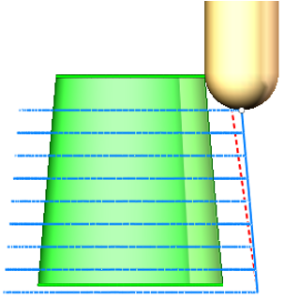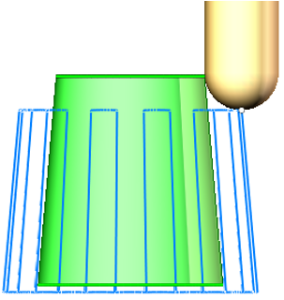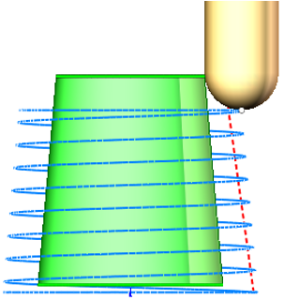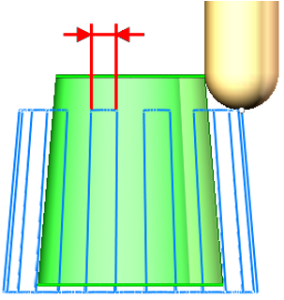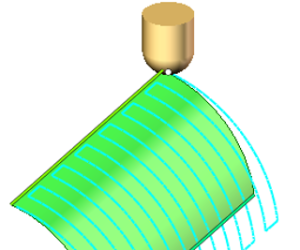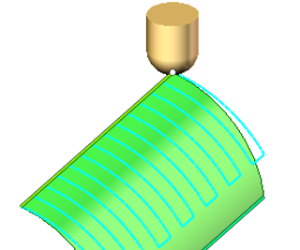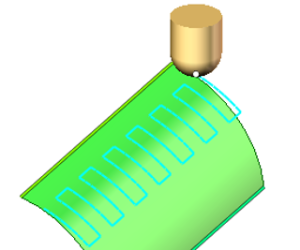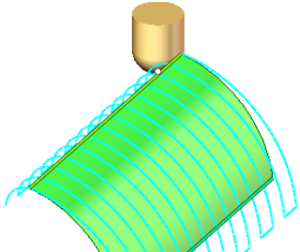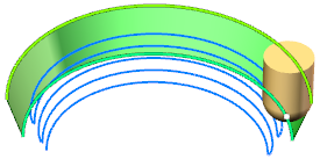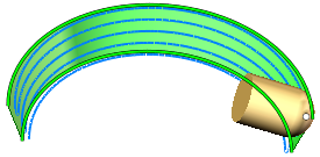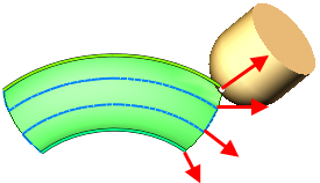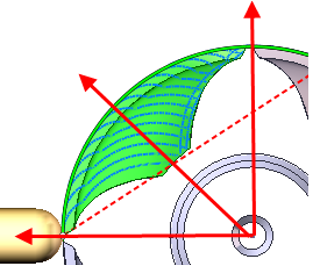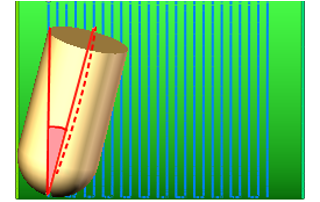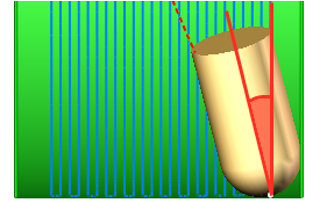Morph operation
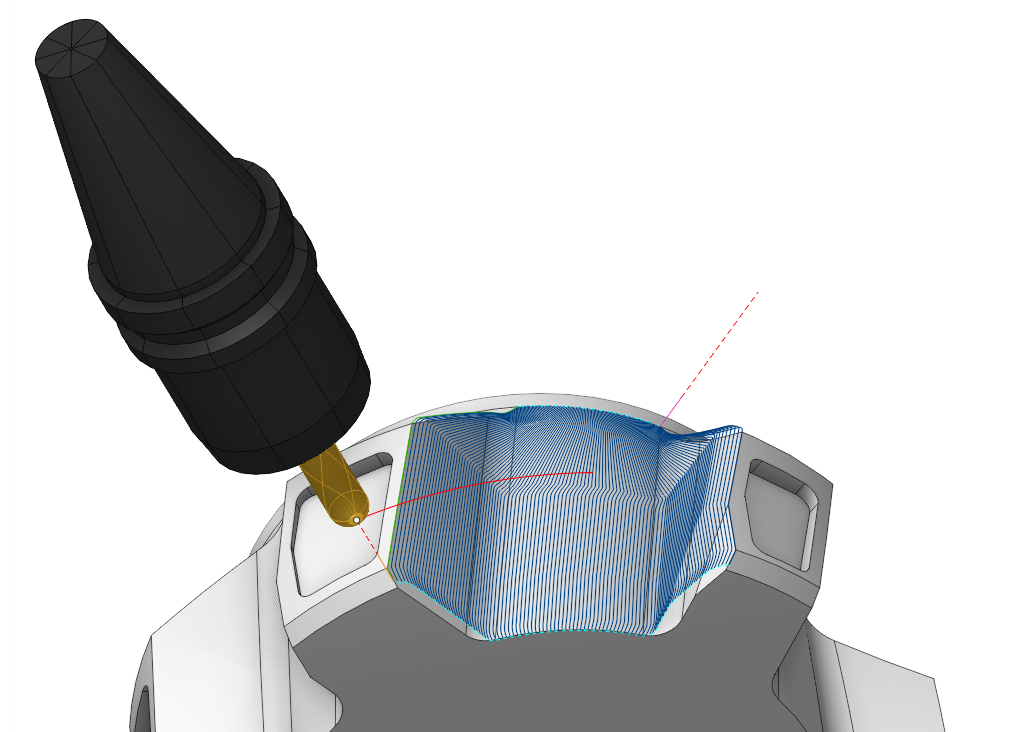
Application Area:
The system generates toolpath passes as lines spaced at a specified distance, each shaped by a smooth transition from the first defined curve to the second
Job Asssignment:
Machining Surfaces. The system uses the Machining Surfaces to restrict the area of machining. Morph generates passes only where a tool has contact with those surfaces. Morph generates passes not between two curves you set in the job assignment, but between two Machining Surfaces contact curves which are closest to those two curves you specify as the First and the Second curve.
First Curve. It is t he starting line from among the two lines between which the system generates the toolpaths.
Second Curve. It is t he finishing line from among the two lines between which the system generates the toolpaths.
Sync lines are used to improve the quality of morphing in difficult cases, especially when machining closed contours. A Sync Line specifies two corresponding points of the First and the Second Curve. You can use any types of curves as Sync Lines: edges, 3D curves, 2D geometry curves. They do not have to start and end precisely on the First and Second Curve. You can draw sync lines at the 2D geometry tab.
Tilt Curve.
This is t
he curve that the tool axis vector aims at when setting
5 Axis Conversion
specification
Through Curve.
Properties. Displays the properties of an element. It is possible to add the stock. You can also call this menu by double clicking on an item in the list.
Delete. Removes an item from the list.
Restrictions. It allows you to restrict areas that should not be machined. See more
Strategy:
Strategy:
These parameters allows the user to achieve a required toolpath:
Milling Type:
This feature enables users to select the necessary milling direction (climb or conventional) during the toolpath calculation process.
The parameters of the Milling Type are the same. as in the Waterline Roughing operation. See more.
Sorting:
Controls the organization of the toolpath during surface machining
Start Point. Activating the flag permits the input of coordinates marking the starting point of working passes in surface machining.
Machining from inside.
The parameter allows you to process the internal surfaces of the part (project the trajectory onto the internal surfaces of the part). This parameter group works similarly to the 5D Surfacing operation. In the section Job zone. See more
Tool Axis Orientation:
Controls the tool axis orientation during the machining process.
5 Axis Conversion:
You can control the tool's position when executing operations on a five-axis machine. See more.
The parameters of tool 's position are the same as in the 5D Surfacing operation. See more.
Limit Rotation Angles:
When the flag is set and the 5 Axis Conversion option is on, it specifies the limit values of the tool's angular position relative to the axes. The parameters of Limit Rotation Angles are the same as in the 5D Surfacing operation. See more.
Trimming:
Allows for the skipping of surfaces not intended for machining . The parameters of Trimming are the same as in the Waterline Roughing operation. See more.
Links/Leads:
In the Links/Leads tab, you define the parameters for rapid movements. These movements include tool approach from the tool change position, engage to the start of the working stroke, retraction after the final cutting motion, transitions between working passes, and return to the tool change point. You can configure the sequence of movements along the coordinates, the trajectory of these motions, and the magnitude of displacements.
Feeds/Speeds:
Using this dialogue the user can define the spindle rotation speed; the rapid feed value and the feed values for different areas of the toolpath. Spindle rotation speed can be defined as either the rotations per minute or the cutting speed. The defining value will be underlined. The second value will be recalculated relative to the defining value, with regard to the tool diameter. See more
Transformations:
Parameter's kit of operation, which allow to execute converting of coordinates for calculated within operation the trajectory of the tool. See more
Part:
A Part is a group of geometrical elements that defines the space to check for gouges. See more
Workpiece:
A workpiece model of an operation defines the material to be machined. See more
Fixtures:
As the Fixtures the fixing aids such as chucks, grips, clamps, etc., and the restriction areas of any other nature are usually specified. See more
